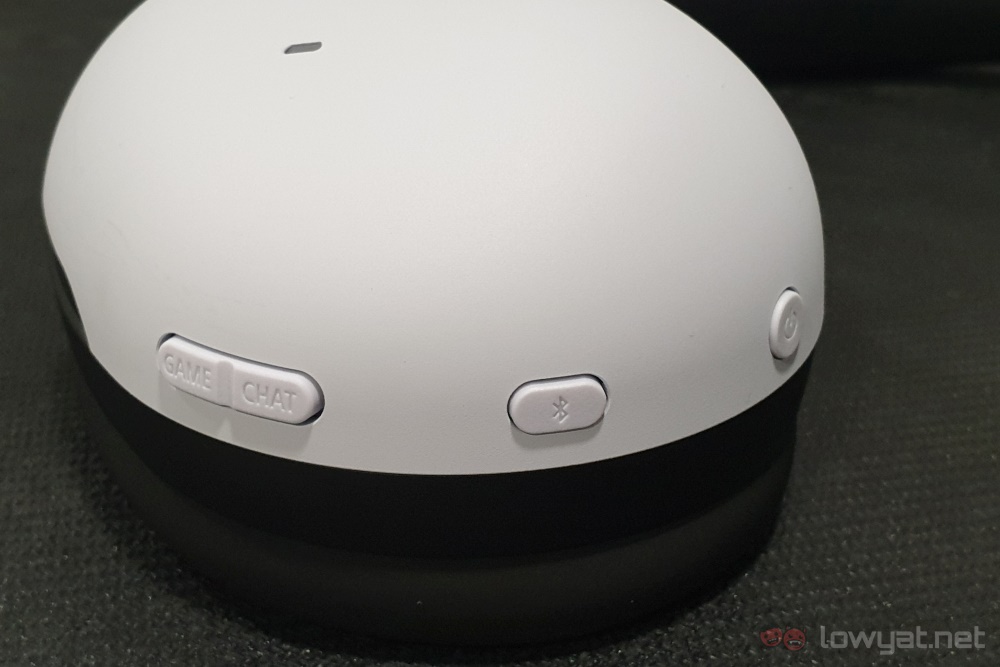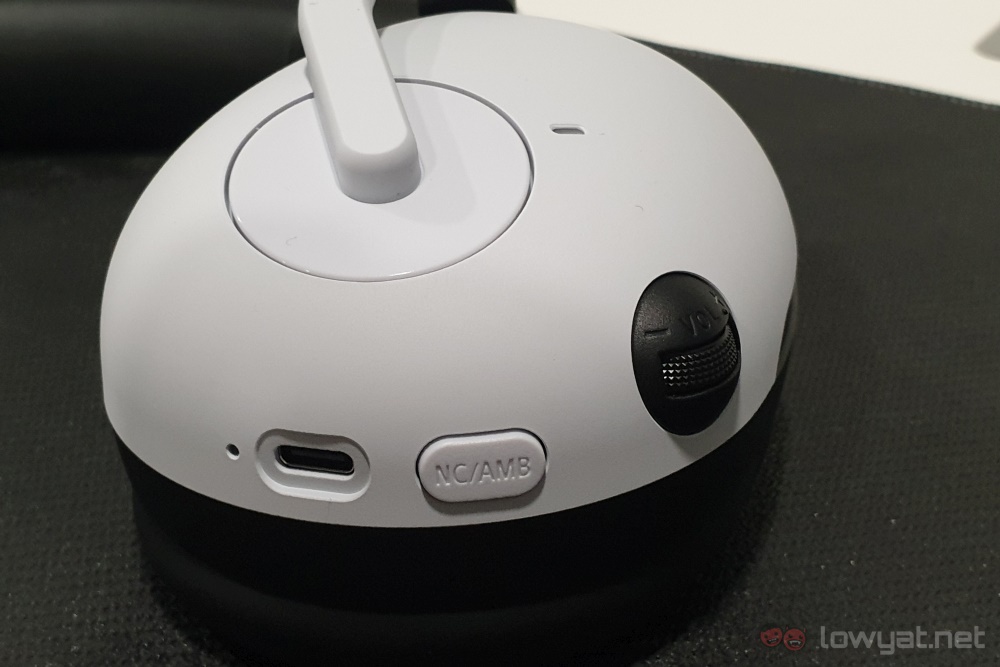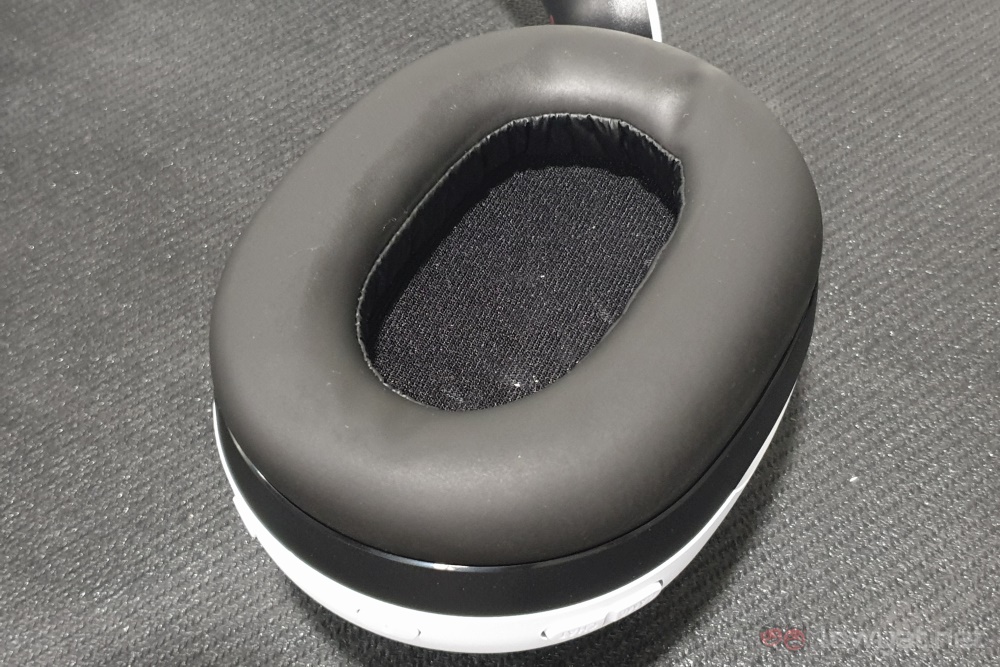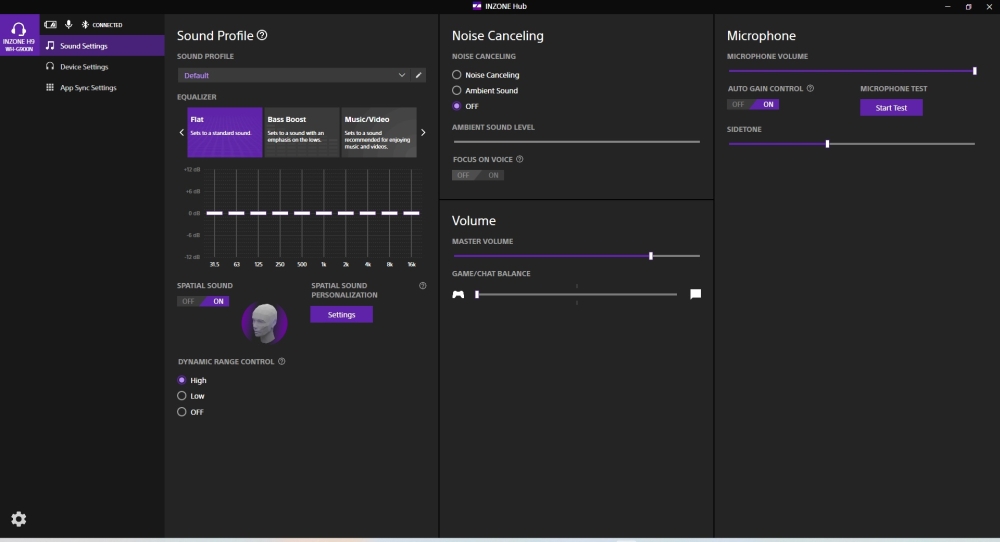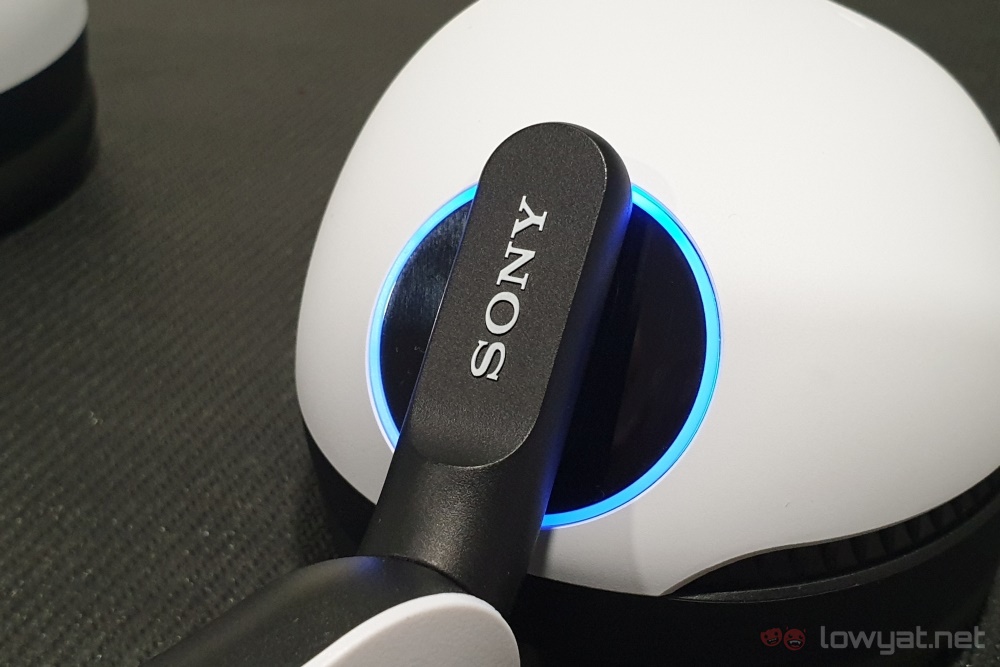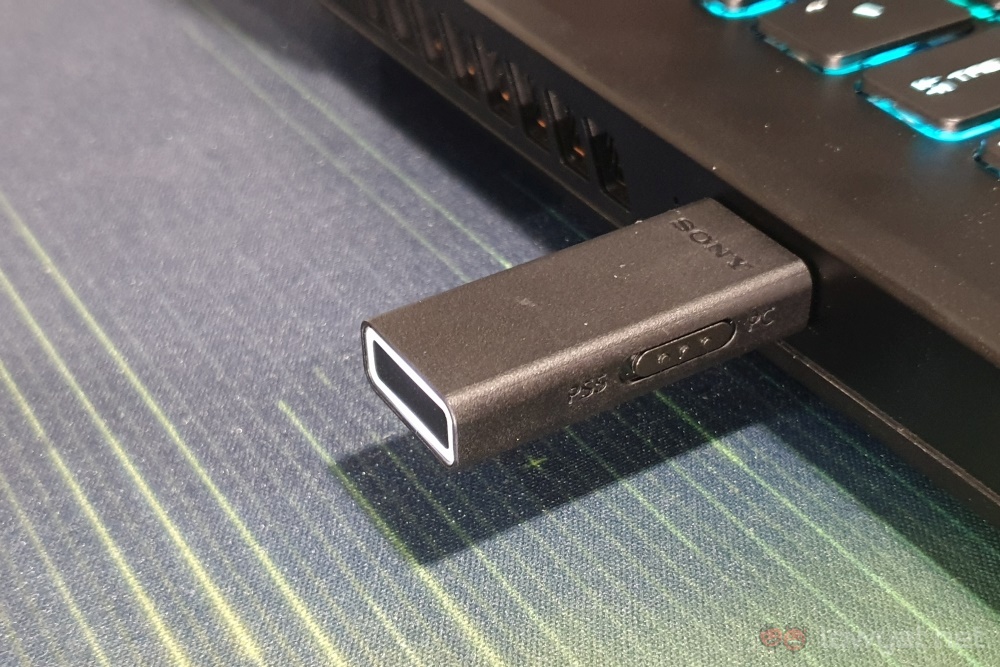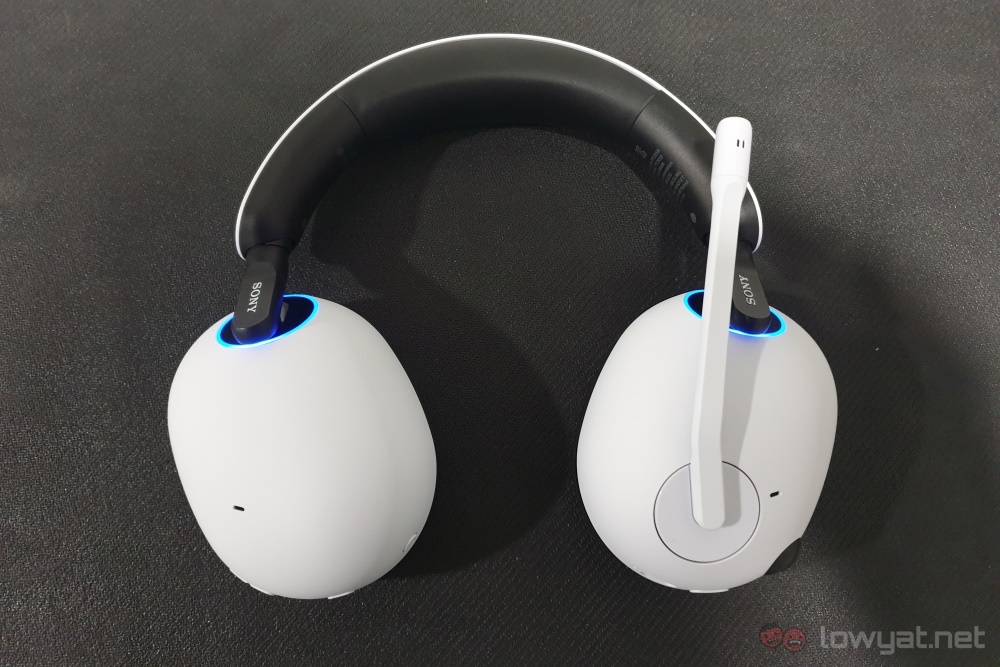Previously, I reviewed the H3 model, which stands as the entry-level SKU of the range, and noted that while it was good for gaming purposes, you’ll probably want something else for your music needs. That would be fine if you already have a pair of headphones for that and just needed something else with a mic for your multiplayer sessions. If you didn’t, and wanted one that can do both, then spoiler alert, the H9 is one to consider.
What Is It?
As the big brother of the range, the Sony Inzone H9 has the distinction of being the only one in the range to not use fabric on its ear cups. Instead, it has the more common faux leather. It also sports blue lights, further making it look like it should go with the PS5 console. Beyond that, it sports mostly the same design cues as the other members of the series, barring minor things like the boom mic being white instead of black. Naturally, being the pricier model with more features, you get more buttons on it as well. The volume wheel remains on the left, but the ear cup on this side has an extra button now. This is the one that toggles between ANC mode, ambient mode, or turns them all off. Which mode it is in is indicated by the number of beeps when you press it – one beep means nothing is turned on, two means you’ve engaged ANC, and three is ambient model.
The long audio cable on the H3 has also been replaced with a USB-C port here on the Sony Inzone H9. In the box, you also get a 2.4GHz dongle. Put these two together, and it means that there’s no wired connection option, which is unfortunate. On the right, you get a power button, a separate button to turn Bluetooth on or off, and a rocker which switches the balance between game sounds and voice chat. That last one is something that’s also found on the Pulse 3D headset.
Is It Any Good?
Despite being packed with more features, the Sony Inzone H9 actually isn’t that much heavier than the H3. Simply put, this means that it won’t be the weight that makes you take it off after a few hours of gaming or relaxing to your own music playlist. To that end, and like the H3, the pinch sets in after a while. With the ear cups being covered in faux leather rather than fabric, passive noise isolation is a fair bit better too. At the very least, when you’re gaming or listening to music, whatever is playing through the headset will definitely drown out most background noises that make it through.
Another major plus point for the Sony Inzone H9 is the fact that you can get audio from both Bluetooth and its 2.4GHz dongle simultaneously. Especially since this is a Sony product, this is very useful for when you’re in a voice chat with some friends on Discord running on your PC or mobile, while playing your PS5 game. It would not be that big of a deal if the console had proper Discord integration, but here we are. Despite the colour difference, the boom mic works in the exact same way, in that it’s only active when you swing it down. There’s a slight difference in quality though, which I will get to in a bit.
The Sound Quality. Talk To Me.
Considering the position of these products within their range, you’d expect that the Sony Inzone H9 would outperform the H3 in all aspects. And you’ll be mostly right, but only mostly. To my ears, I feel that the latter does just a hair better on the spatial audio department. For whatever reason, I can’t really put my finger on it; the H3 is just that little bit more precise, letting me pinpoint sound sources just that little bit better. Which is no dig on the H9, as it’s plenty good on its own. For general music consumption though, the pendulum swings hard to the other end. The issue with the bass being clear but weak is certainly not an issue with the H9, without warping the balance between the lows, mids and highs. This might have something to do with the very slight dip in spatial audio performance, but the difference is just too great in favour of the H9. Which shouldn’t exactly be surprising considering their price difference.
The Bad Stuff. Tell Me.
I mentioned earlier that we will be getting back to the boom mic, and unfortunately, this is why. On one hand, I would like to say that the mic on the Sony Inzone H9 is the same as the H3, but that’s not the case as it turns out. While it doesn’t suffer from volume issues and the connection isn’t choppy, sound quality can best be described as “old landline”, making it a little worse than the H3. And considering the asking price of the H9, you’d probably expect a little better from it. Beyond that, probably the only issue I have with the Sony Inzone H9 is the fact that the aforementioned swivel mic cannot be detached. One of the H9’s competitors in the same price bracket is the Razer Barracuda Pro, which the peripheral maker touts as being a hybrid, suitable for both indoor and outdoor use. This means that it is passable as a fashion accessory while in use, should you be so inclined. Which is fair considering its symmetrical design. But for the H9, it would require someone who can make the non-detachable swivel mic work, and I hesitate to imagine the kind of person that can make it happen.
Should I Buy It?
The Sony Inzone H3 does many things right, and the offhand claims that you may have heard about it being the gaming equivalent of the WH-1000XM5 are not unfounded. Though, for the sake of balance, those on the other end of voice chats are not having the best experience. They will still hear you clearly, so it’s probably not as big an issue, but for RM1299, it’s hard to shake the feeling that my gaming pals should have a better time. Beyond its microphone issues, if you intend to use it mainly indoors, then the Sony Inzone H9 will probably serve you well. That being said, if you’re the kind of person that can make headsets with undetachable swivel mics work, then that’s an added bonus for when you need headphones for your music needs while you’re out and about.
